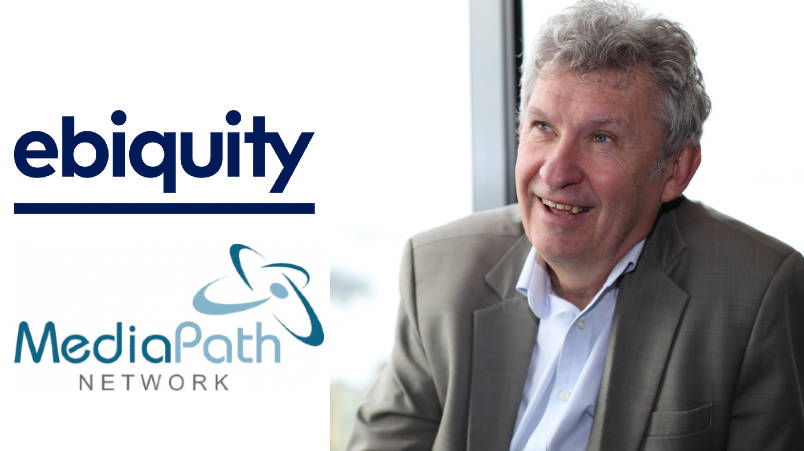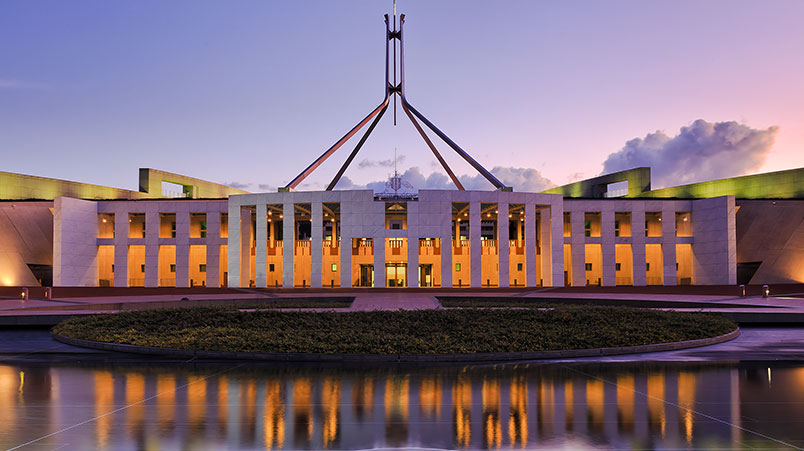'Pitchpalooza 2020': Marketers hunt for data-driven agencies, COVID cost savings as $500 million up for grabs

Toyota, BMW, ANZ, Westpac, HBF and Craveable Brands are just some of the brands that make up 2020’s Covid ‘Pitchpalooza’. But is it as it seems? Consulting firm R3 says the number of pitches is back 7.6% year-on-year, despite 20 to 30 agency reviews in market. Some pitch consultants say the sudden influx is driven by COVID, the need for data and tech-led agency partners and cost-saving measures that could be about ensuring job security for marketers.
“Look at L’Oréal globally. Over the past six months, e-commerce has gone from 15% of its revenue to 30%, When that happens, you're going to want to relook at the way you work with all your partners, not just media, because your business models are changing so dramatically.”
What you need to know:
- Some of Australia’s highest profile brands have put their creative and media accounts out for pitch, in what is being dubbed the new “Pitchpalooza”.
- Many of these account reviews were already in train before COVID hit, with some key brands contractually obliged to review agency relations.
- Several reviews were put on pause during the height of COVID and have since started again.
- OMD CEO Aimee Buchanan told Mi3 that these two factors are making it look as though there has been a surge in reviews, when instead it is a similar amount as usual but condensed into a short period.
- Marketing advisory firm R3 agrees, saying the number of account reviews is down 7.6% year-on-year in Australia and down 11% globally.
- Trinity P3 boss Darren Woolley says the criteria and expectations in account reviews have changed because of the current climate.
- He says some marketers are using reviews to slash costs and prove their value to their company’s board.
- Media and marketing advisor Jen Davidson of Tumbleturn Media says there is also a keen focus on finding an agency partner that can “lead brands out of COVID”.
- She says some accounts will be decided on how well equipped an agency is to handle the changing digital landscape, including tech, data, UX and e-commerce capabilities.
“The need for first-party data, growth in performance marketing, the boom in e-commerce and advances in addressable advertising channels have all shown an incredible value to brands this year,”
About that time again
It has been five years since brands including Johnson & Johnson, Mondelez, GSK, Citi, Mercedes-Benz and Sony took part in the famous 2015 “Mediapalooza”.
Now, unlike in 2015, there are many accounts up for grabs for all sides of the industry – media, creative, digital, social and PR – in what many are calling “Pitchpalooza”.
This year’s list includes brands such as Toyota, L’Oréal, ANZ, Westpac, HBF, Craveable Brands, the Victorian government master media account, BMW and TK Maxx.
Companies that have hired new agencies and extended their existing deals this year include Bonds, 7-Eleven, Caltex, Pandora, Catch, Lion, TipTop, Bendigo Bank and the University of Tasmania.
According to the leading pitch consultants in Australia, the volume of activity is not surprising, given the current economic climate and the relentless push by some companies to cut costs.
Between 20 and 30 account reviews are taking place now Australia, with a combined media spend value of about $500 million.
However, New York-based marketing advisory firm R3 Worldwide says the volume of pitches has declined 7.6% in Australia year-on-year.
One agency executive who did not want to be named told Mi3 there was always going to be a point where marketers “pushed the button” and went on the hunt for an agency that could “lead them through COVID”.
“It shouldn’t be that shocking. Of course, there are going to be those who see this as an opportunity to find solutions, trim costs or use it as an excuse to see what else is out there,” the exec said.
OMD CEO Aimee Buchanan says a lot of major pitches her team has been working on were already in train before COVID, were put on pause and have now restarted.
One example is Toyota, which put the review of its $90 million account on hold earlier this year due to the restrictions on travel, hoping it would be able to eventually conduct final presentations face-to-face.
“This has created a cluster of pitches all occurring in a narrow window. While it may appear to be bigger than previous years, it’s actually just being intensified by those time constraints.”
“What the lockdown period has done for those brands who elected not to go down the digital pitching path has set them back months, where by now they would have already appointed an agency,” Buchanan says.
“Then you have the brands that were planning on going to pitch around this time regardless of COVID and those who have moved plans forward to address the issues that have come with COVID.
“This has created a cluster of pitches all occurring in a narrow window. While it may appear to be bigger than previous years, it’s actually just being intensified by those time constraints.”
Job security and future proofing
Trinity P3 CEO Darren Woolley says another factor behind Pitchpalooza is the need for some marketers to prove their value to their company’s CEOs, chief financial officer and boards.
“It’s no secret in this industry that the marketing budget is one of the first things to get scrapped in times of difficulty; add COVID woes to the mix and it’s amplified the issue even further,” Woolley says.Woolley says the pressure on marketing budgets, coupled with global account reviews and the need for marketers to prove the value of what they do is creating the “perfect storm for change”.
He says those clients and agencies getting caught up in the “race to the bottom” will find themselves struggling, while those pushing ahead in transformational areas will see greater success.
“There are going to plenty of opportunities for brands to prove how clever they are over the coming 12 months and a lot of that will be based on the agency partner they choose,” Woolley says.
“What you might be seeing here is a level of concern around job security and a CMO using a pitch to prove their worth as part of the business.”
“Those that look to take the easy cost-saving measures are only ever going to get what they pay for. Smart brands and agencies can shine through in this period and make long-lasting partnerships.”
“If you’re a marketer right now in a business that is losing revenue or is looking at a few difficult years ahead, then a pitch is going to show the CFO you’re looking to assist financially,” Woolley says,
“What you might be seeing here is a level of concern around job security and a CMO using a pitch to prove their worth as part of the business.”
“Imagine you come back to the board and [say] that selecting agency ‘X’ will provide cost savings of 10%, it’s going to make the CFO look at you more favourable.
“It’s not the only reason brands are going to pitch but it’s one motivator I think people might not be aware of.”
Tumbleturn Media Founder Jen Davison says there is also the element of “future proofing” agency relationships in the current account reviews.
She says COVID has accelerated digital transformation trends, from e-commerce through to performance and digital media budgets. At the same time, more importance is being placed on working with agencies that have deep experience in the data, customer experience and tech sectors.
Davison says smart marketers are using account reviews to establish relationships with “forward thinking” agencies that “have got it together” across all aspects of the industry.
“The need for first-party data, growth in performance marketing, the boom in e-commerce and advances in addressable advertising channels have all shown an incredible value to brands this year,” Davison says.
“Over the next 12 months we will see the next wave of data-driven media buying – programmatic and automated leading the charge – and marketers are using this period to identify the best-equipped agencies in that space.”
Buchanan says there is certainly a move by marketers to find longer term agency partners but there is also an onus on agencies to avoid being “sucked into a cost-saving agenda”.
“We know that for some brands, cost is going to be front of mind and that’s going to be heavily influenced by what sector they are in and how COVID has impacted it,” Buchanan says.
“However, that’s a short-term approach and isn’t going to provide a sustainable growth strategy and agencies need to avoid taking on taking on those clients if they are to provide a compelling offering.
“That’s the position we and I’m sure other agencies are currently finding themselves in – we’ve said no to a few pitches due to [cost-related] demands and it’s something we will continue to do, regardless of the brand.”
“That’s the reason why people are viewing this period as another ‘big moment’, because the core principals of what marketers are looking for is fundamentally shifting.”
Creatives hit the studio
Davidson says the same level of consideration around choosing needs to be applied to creative agencies, albeit with different models.
She says a “studio model” has become increasingly more valuable to clients looking to appoint a new creative agency.
“The studio model is about having an end-to-end production offering that can cater to the extensive amount of media channels brands now need to be across,” Davidson says.
“Brands are becoming less interested in the traditional creative agency model of one team handling the big TV ad, another the OOH, and so on. It now needs to be fully integrated so that the entire campaign can be converted into multiple iterations and quickly.”
Davidson says approach offers cost saving benefits, but the key benefit is the ability to deliver creative rapidly across multiple platforms, particularly as some brands focus more on real-time and geo-targeted messaging.
“While the real-time conversation isn’t new, we’ve seen more interest in it as of late due to the growing number of digital channels available,” Davidson says.
“COVID has also shown that there is a growing desire from brands to have creative that can be modified or updated to reflect changing consumer or societal trends and patterns.”
International opinion
While the number of account reviews in Australia is down 7.6% year-on-year, figures from R3 Worldwide show an 11% decline globally.
R3 Principal Greg Paull says: “Brands are now on a cycle of three to five years with their agencies, primarily due to the contractual set-up they have.
“That’s what the ‘new normal’ really is: brands testing the market so they can establish a baseline for the next three to five years. A brand may keep the incumbent, sure, but they also learn what other options exist.”
Paull sees similar trends in account reviews here and globally.
He says the e-commerce factor, while an obvious one, is something every agency and brand should be across when involved in a review.
“Look at L’Oréal globally. Over the past six months, e-commerce has gone from 15% of its revenue to 30%,” Paull says. “When that happens, you're going to want to relook at the way you work with all your partners, not just media, because your business models are changing so dramatically.”
“That’s the reason why people are viewing this period as another ‘big moment’, because the core principals of what marketers are looking for is fundamentally shifting.”
Paull says some marketers changing the criteria they use during account reviews.
“Sure, there’s the conversation around driving a lower overall cost, but smarter brands are now looking at whole new ways to assess an agency. Samsung, for example, is looking at talent,” Paull says. (R3 is working on a global Samsung review.)
“They know it’s about being able to have the best possible people on their team, so much so that they are actively setting lower churn rates in teams as a KPI. They want less than 10% churn in senior talent.
“That, alongside the tech, data and digital push, is where marketers are going to change the way they go to pitch. Cost can’t be the driver and for brands looking to come out of this in a better position, it won’t be.”








